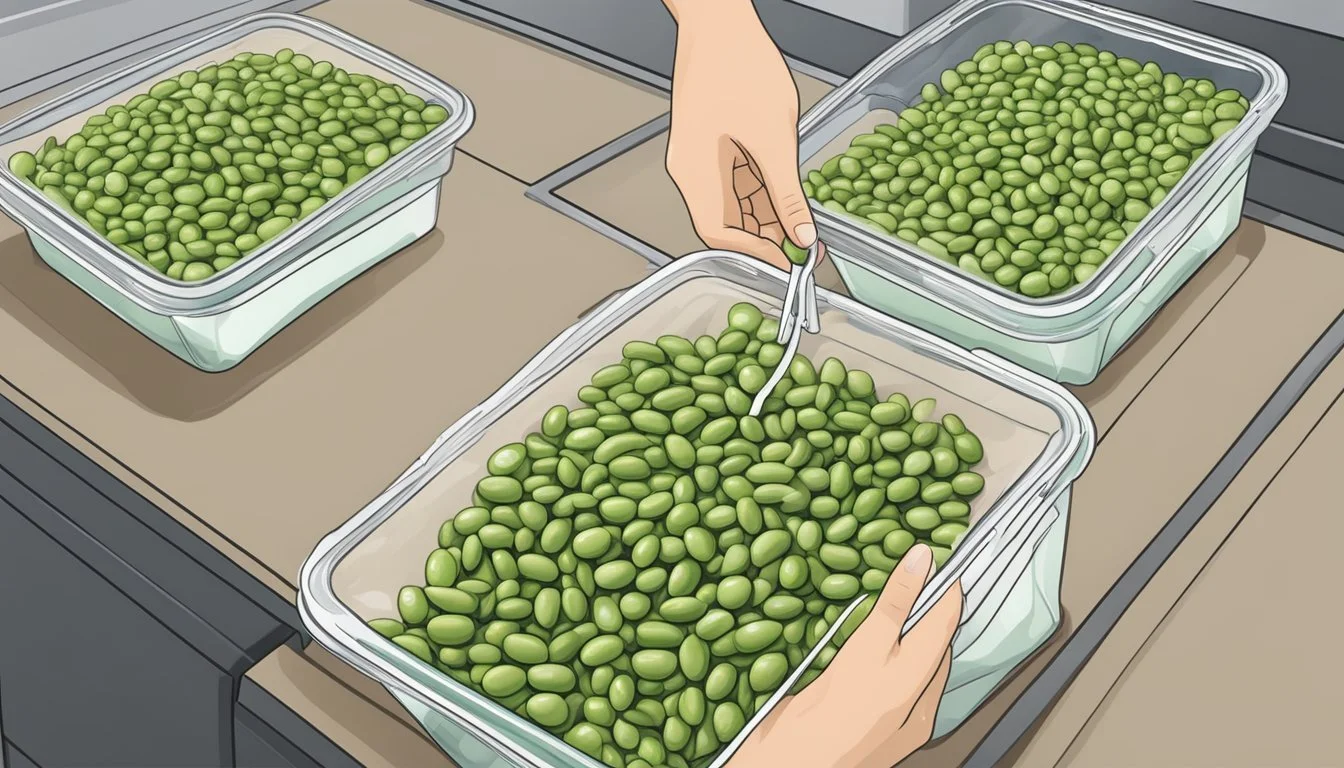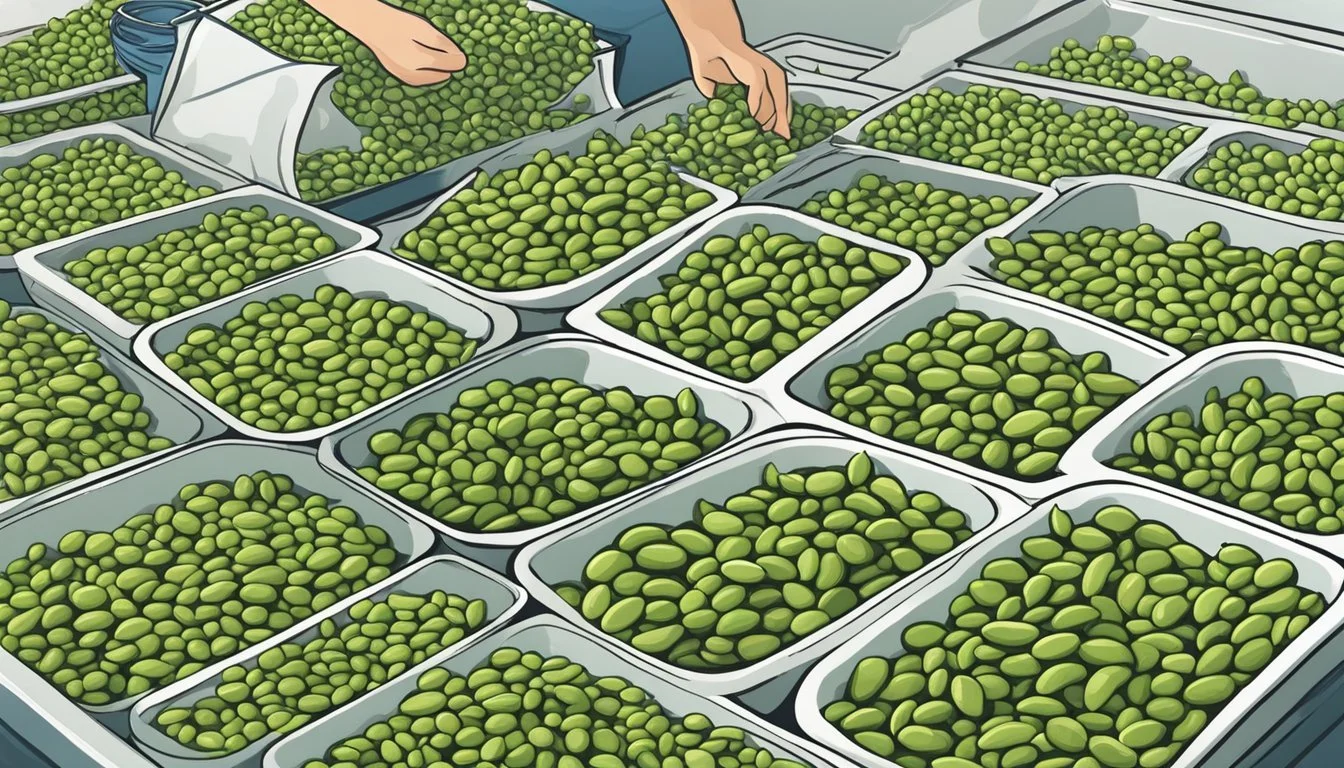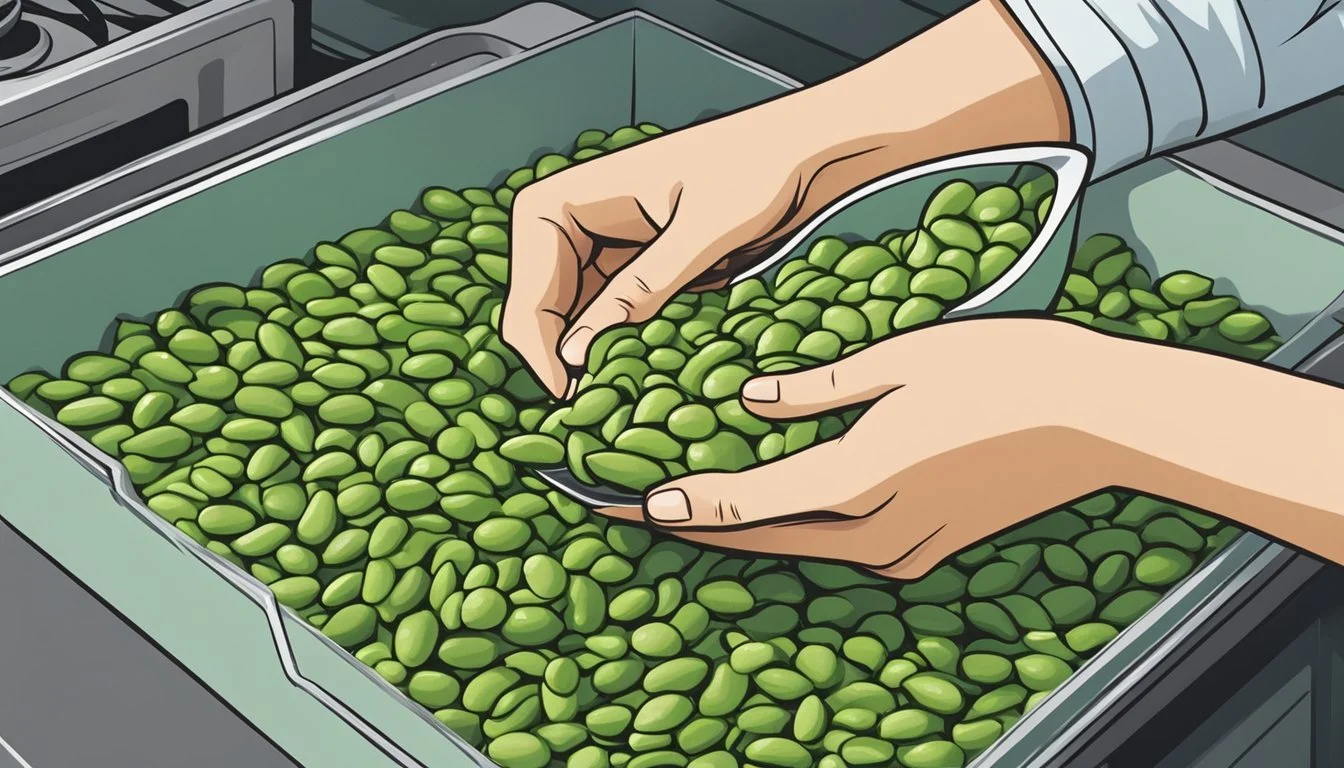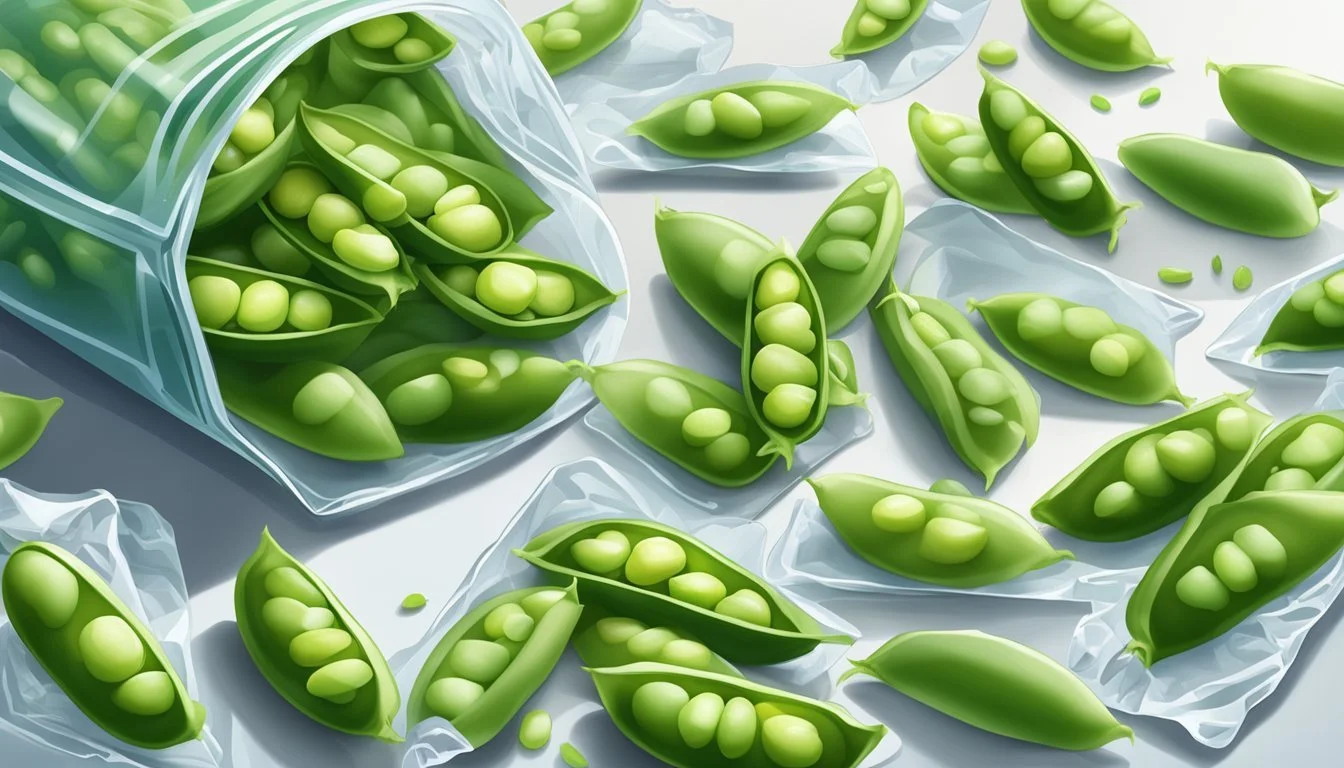How to Freeze Fresh Edamame for Healthy Snacks
A Step-by-Step Guide
Preserving edamame by freezing is an efficient way to extend its shelf life while maintaining the nutritional benefits, making it a conveniently accessible and healthy snack. Edamame, rich in protein, fiber, and essential vitamins and minerals, offers a great snacking option for those seeking nutritious and satisfying food choices. As fresh edamame has a limited lifespan in the refrigerator, freezing presents a viable solution, enabling individuals to enjoy the legume's fresh taste and health properties long after its typical refrigerated shelf life.
The process of freezing edamame is straightforward and, when done correctly, can preserve its texture and flavor. It begins with selecting fresh, vibrant green pods that are firm to the touch. The key to successfully freezing edamame is to blanch the pods in boiling water before freezing. This important step helps to retain the color, halt enzyme activity that can lead to spoilage, and ensure that the edamame remains safe to consume.
Storing the blanched edamame properly is critical. Once the edamame has been cooled rapidly in ice water and thoroughly dried, it should be spread out in a single layer on a baking sheet. Freezing them individually first, then transferring to an airtight container or freezer bag, helps prevent the pods from clumping together. This way, one can ensure the edamame remains easy to portion and use as desired for a quick and healthy snack.
Benefits of Freezing Edamame
Freezing edamame effectively extends its shelf life while preserving its fresh flavor and rich nutritional profile. Not only does this process allow for the enjoyment of edamame year-round, but also maintains its health benefits.
Prolonging Freshness and Flavor
When fresh edamame is frozen, it retains its taste and texture much longer than if left at room temperature or refrigerated. Freezing acts as a natural preservative, halting the growth of microorganisms that cause decay. Consequently, the shelf life of edamame is significantly extended, enabling one to enjoy its flavor for months. The key steps in the freezing process—blanching in hot water followed by a quick cool down in an ice bath—are designed to ensure that the flavor and freshness are locked in before the edamame is sealed and frozen.
Nutritional Advantages
Freezing edamame also captures its nutritional value, enabling the retention of important vitamins, minerals, fiber, and antioxidants. In comparison to fresh edamame, which can lose nutrients over time even when refrigerated, frozen edamame maintains its nutritious quality. It remains a robust source of protein, fiber, iron, calcium, and other vital nutrients, making it a convenient and healthy choice for snacking or adding to meals. The quick-freeze process minimizes nutrient loss, ensuring that each serving of frozen edamame is as nutritious as when it was picked.
Selecting and Preparing Edamame for Freezing
The process of freezing fresh edamame begins with selecting the best pods and properly preparing them. This ensures the edamame retains its vibrant color, appetizing flavor, and tender texture once defrosted.
Choosing the Right Edamame
When purchasing edamame, one should look for pods that are plump, firm, and green. These characteristics are indicative of freshly harvested edamame. Pods that are yellowing or blemished may indicate age or poor quality. Choosing edamame harvested at its peak will provide the most flavorful and nutritious results.
Cleaning and Rinse
Before blanching, it is essential to thoroughly wash the edamame pods to remove any dirt or debris. Place the edamame in a colander and rinse under cold, running water. Gently agitate the pods with hands to ensure all surfaces are cleaned. Proper rinsing is crucial to avoid any contaminants freezing with the edamame.
Blanching Edamame
Blanching edamame is a necessary step before freezing. It stops enzyme activity that can spoil the flavor and texture. To blanch, bring a pot of water to a rolling boil. Add the edamame and boil for three minutes—this short cooking time helps maintain their vibrant green color and tender crispness. After boiling, promptly immerse the edamame in ice water to halt the cooking process. Drain the pods once they have cooled completely, ensuring they are ready for freezing.
Freezing Process
Proper freezing of fresh edamame is crucial to maintain its flavor, texture, and nutrients. The process involves blanching, cooling, drying, and storing edamame in a way that minimizes the risk of freezer burn and ice crystal formation.
Cooling Down
After blanching edamame pods in boiling water for 3 minutes, they should be transferred immediately to a bowl of ice water. This stops the cooking process and helps to preserve the bright green color and crisp texture. The edamame should remain in the cold water until completely cooled, usually for the same amount of time as they were blanched.
Drying and Draining
Once cooled, the edamame pods need to be drained thoroughly. It's important to remove excess moisture as this can lead to ice crystal formation which affects the quality after thawing. After draining, spread the pods out on a clean towel and pat dry to ensure that they are as dry as possible before freezing.
Packing Edamame
Place edamame in a single layer on a baking sheet lined with parchment paper to prevent sticking. Flash freeze them by placing the tray in the freezer. Once the edamame pods are frozen, transfer them to freezer bags or an airtight container. If using bags, remove as much air as possible using a vacuum sealer to help prevent freezer burn.
Labeling and Storing
Before placing the sealed edamame into the freezer, label the containers or bags with the date of freezing. Proper labeling is important to keep track of the shelf life and ensure that the edamame is consumed while at its best quality. Stored correctly, frozen edamame can last in the freezer for up to 12 months. Always keep them at a consistent, cool temperature to retain safety and quality.
Using Frozen Edamame
Frozen edamame is versatile, retaining nutrition, texture, and flavor well, making it an excellent addition to various dishes. Whether one is looking to enjoy a warm snack or enhance their recipes, frozen edamame can be prepared with ease.
Defrosting and Reheating
To defrost frozen edamame, simply transfer it from the freezer to the refrigerator for a few hours or leave it at room temperature for a shorter period. The goal is to preserve the edamame's texture and flavor. For a quicker solution, one can rinse the edamame under cold water. If reheating is desired, a microwave can be used efficiently. To reheat, place the edamame in a microwave-safe dish and heat on full power for 30 to 60 seconds. One can also reheat edamame by steaming or lightly sautéing it in a pan until warm, enhancing its natural, nutty flavor.
Incorporating into Dishes
Edamame is a highly adaptable ingredient suitable for both cold and warm dishes. It can be added to salads for a protein boost or thrown into stir-fries to add a crunchy texture. When incorporating frozen edamame into soups or stews, add them during the last few minutes of cooking to maintain their firmness and vibrant green hue. For a twist on traditional snacking, one might opt for roasted edamame. Toss the beans lightly in oil and desired seasonings, spread them on a baking sheet, and roast until crispy. Regardless of the dish, frozen edamame's versatility allows it to blend seamlessly into any recipe it accompanies.
Maintaining Quality
When freezing fresh edamame, the primary goal is to preserve its quality, ensuring that it remains a healthy and enjoyable snack. Key to achieving this is the prevention of spoilage, which involves identifying and discarding any edamame that have started to go bad before freezing.
Assessing for Spoilage
Visual Inspection: One should check for any discoloration on the edamame pods. If they have browned spots or are starting to look discolored, it could be a sign of spoilage.
Texture Check: Fresh edamame should feel firm to the touch. Pods that are slimy or overly soft may have begun to go bad and could potentially harbor bacteria.
Safe to Eat: Firm, green pods with no signs of slime or softening.
Not Safe to Eat: Browned, slimy, or overly soft pods.
Odor Assessment: Any off or unpleasant odors are a strong indication that the edamame should not be consumed and must not be frozen.
By rigorously inspecting edamame for signs of spoilage, one ensures that the hard work spent freezing doesn't go to waste. It is always better to err on the side of caution, as consuming spoiled food, even if it has been frozen, can pose health risks.
Health and Diet Considerations
When incorporating frozen edamame into one's diet, it's essential to recognize its nutritional profile. Edamame, a young soybean, has been praised for its high protein content, which makes it a favourite among those following plant-based diets. A single serving can provide a substantial amount of an individual's daily protein needs, which is particularly beneficial for vegans seeking alternative protein sources.
Edamame is also low in calories, yet it contains a significant amount of dietary fiber. This combination makes it an excellent choice for a nutritious snack that can assist with weight management by promoting fullness without an excessive calorie intake. The fiber present aids in maintaining healthy digestion and can contribute positively to cardiovascular health.
Furthermore, edamame is a vibrant source of vitamins and minerals, underpinning its role in a balanced diet. It is especially rich in vitamin K, folate, manganese, and iron, rounding out its profile as a nutrient-dense option for health-conscious individuals.
Nutritional Breakdown of Edamame (per 1 cup serving):
Calories: 188
Protein: 18.4 grams
Fiber: 8.1 grams
It is important for consumers to note that edamame, like other soy products, should be consumed in moderation, as it contains compounds that can affect hormonal balances when ingested in high quantities. Nevertheless, when eaten as part of a diverse and balanced diet, frozen edamame is not only a convenient snack but also a smart dietary choice for those looking to maintain a healthy lifestyle.
Tips and Techniques
When freezing fresh edamame, certain tips and techniques can ensure optimal flavor and texture. This section delves into methods for enhancing the natural taste of edamame and ideas for serving them creatively.
Enhancing Flavors
Before freezing, flavor enhancement is crucial for edamame. Blanching in water salted with about one tablespoon of salt per gallon helps to maintain the beans’ vibrant color and taste. For additional depth, one can introduce spices such as crushed garlic or chili flakes during the blanching process. Quickly cooling the edamame in ice water after blanching will stop the cooking process and lock in the flavors.
Recommended Spices:
Salt
Crushed garlic
Chili flakes
Creative Serving Ideas
Once the edamame is frozen and ready to use, there are creative ways to serve this flavorful appetizer. One can serve them chilled with a side of hot sauce or incorporate them into salads for an extra crunch. Reheated edamame makes a great addition to grain bowls or can be sautéed with other vegetables for a nutritious side dish.
Serving Suggestions:
Chilled with hot sauce
In salads
In grain bowls
Sautéed with vegetables







